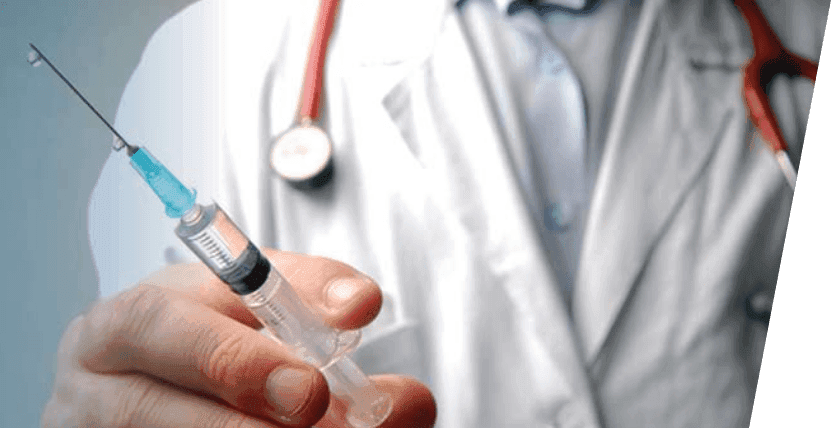
Date of posting: 04-03-2025
Reading time: 5 min read
A single mosquito bite can lead to multiple life-threatening diseases, and malaria is one such illness. An infection that is not treated properly at the early stage itself can result in severe complications.
Considering the global threat this mosquito-borne disease poses and the need to confront it with awareness and guidance, World Malaria Day is observed each year on April 25 across the globe.
In light of the day, here’s some helpful information everyone should know about malaria. To learn more, keep reading the blog.
Malaria: Infection Explanation It should be known and noted that malaria is a disease caused by a parasite, not a bacteria or virus. In terms of infection, the biological process that leads to a human getting the sickness goes as follows:
A bite from an infected female Anopheles mosquito; this specified mosquito carries Plasmodium parasite.
The parasite is transferred or released into the sapien bloodstream as a result of the bite.
The passage followed by the parasite is as follows: bloodstream to liver and back to bloodstream.
The parasite matures itself in the liver.
After maturation is successfully done, the parasite makes its way back to the bloodstream and starts infecting the red blood cells (RBCs).
Parasites start multiplying inside the RBCs, thus causing the infected cell to burst into the bloodstream.
There are a total of 5 parasites that are responsible for causing malaria in humans, and they are:
falciparum, the deadliest
vivax, most dominant
malaria
ovale
knowlesi
Generic Info
As mentioned above, malaria is a threat to almost every region and human being in the world. However, the geographical locations specifically under the highest risk are tropical and subtropical destinations.
According to the last report published by the WHO, the statistics for the disease in 2022 revealed that 249 million cases of malaria were tracked, and the number keeps increasing each year.
Symptoms and Signs
The outcome of symptoms is dependent on the stage of the disease one is in. Though the most common symptoms at all stages of malaria are:
Fever
Chills
Headache
Fatigue
One should know that symptoms of malaria are observed after 10–15 days of getting infected. And since at the start, the sickness may be diagnosed as fever or cold, a test at the initial stage itself to confirm is best advised.
Some of the other symptoms that can be seen when infected with malaria, especially in severe cases, or can be said as life-threatening situations of the disease can be as:
Acute kidney injury
Metabolic acidosis
Cerebral Malaria
Acute Respiratory Distress Syndrome (ARDS)
Severe Anemia
Treatment: How to Treat Malaria? Now, when we know what the disease is, how it affects our body and infects our blood system, and what are the various signs one needs to look out for to identify malaria, let us discuss the way to treat the illness.
It should be noted that Malira treatment options are best carried out in the hospital. The medication or medical procedure to treat the infection is based on the parasite one is infected with. In cases where the parasite might show resistance to the drugs, the medicinal combination advised to consume can be altered or changed.
The malarial infection triggered by P. vivax and P. ovale can show symptoms later or again, as both strains can live inside the body, so disease can be caused after prior treatment. Hence, additional medication is taken to avoid the same.
As is known by now and mentioned, malaria is caused by mosquito bites; thus, the basic malaria prevention strategies would start with avoiding the mosquito itself.
Some additional tips to prevent the infection are:
Use mosquito repellent.
Use mosquito nets.
Wear long pants and shirts to cover the skin.
Use window nights.
Avoid collecting water at one place.
Use coils and vaporizers.
Add a layer of bug repellent to your sunscreen.
Since the infection is a threat to the population and poses a health hazard to everyone, the malaria vaccine development to avoid the disease seemed like a necessity, and as a response to the concern, a vaccine was manufactured.
R21 is one of the best-known vaccines available on the market these days. It is made especially for children and is given to them as kids only in order to avoid malaria infection in the future.
Conclusion To sum up all the context mentioned above, one can say malaria is for sure a life-threatening infection. Thus, avoiding it and preventing it at all possible costs is best advised. Additionally, a correct and early diagnosis is also essential if an infection has occurred.
In short, in every case, we as humans need to act smart and fast to avoid the hazards the disease can pose if it transitions to a severe stage.
Our experts and our Apollo Homecare team are always here to do the correct diagnosis, carry out the tests at home, and also offer hospital-like quality treatment at home for your comfort.
To learn more or to book an appointment, get in touch with us now!

Written by:
Apollo HomeCare is a trusted name in home healthcare, dedicated to delivering world-class medical care to patients in the comfort of their homes. With a team of expert doctors, nurses, and therapists, Apollo HomeCare provides personalized healthcare solutions, from post-surgical care and chronic disease management to physiotherapy and elder care. As a thought leader in the healthcare industry, Apollo HomeCare shares insightful blogs on home healthcare trends, wellness tips, and expert medical guidance to help individuals and families make informed health decisions. Our mission is to ensure quality healthcare is accessible, convenient, and compassionate.